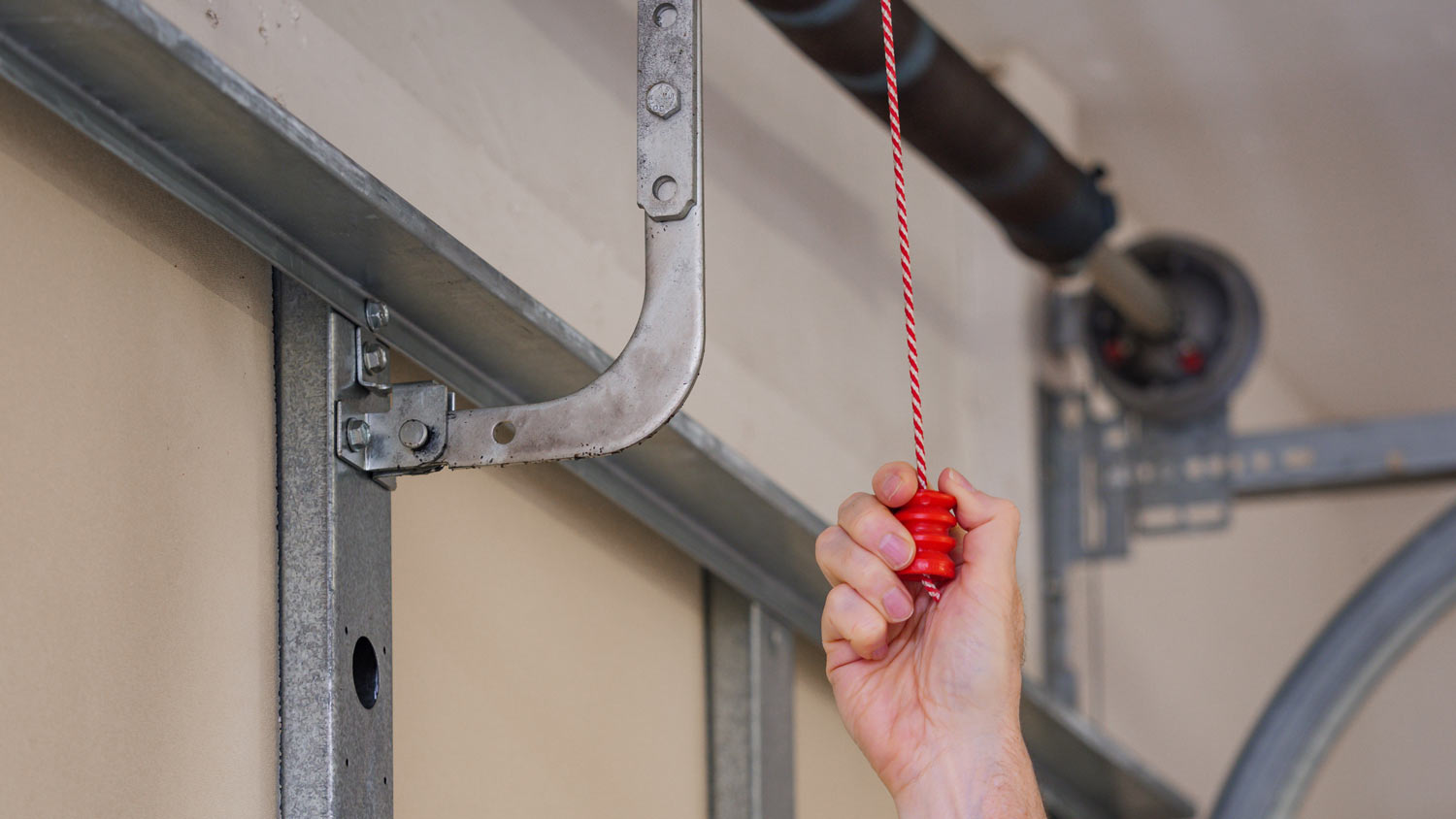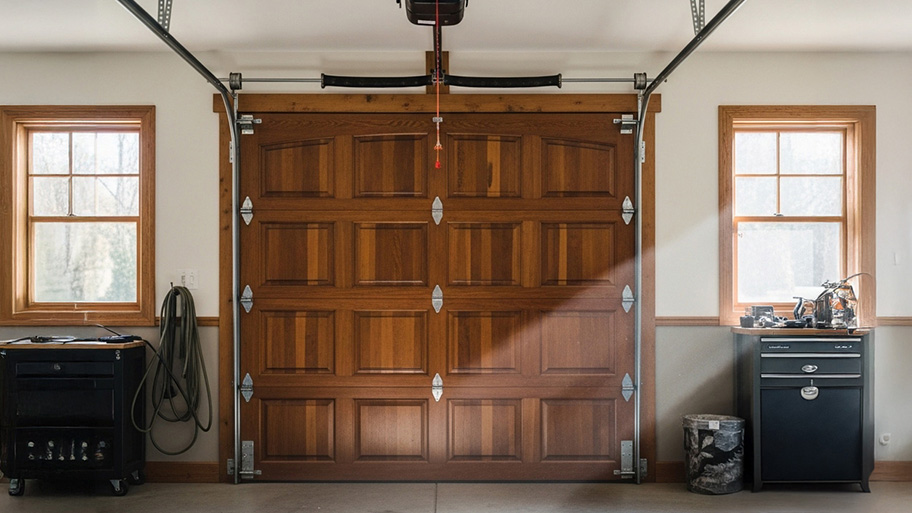
This guide will help you determine the true cost of installing garage door openers. You’ll need to consider type, horsepower, and other factors.
Sometimes you need to take matters into your own hands


While hiring a pro to open your garage door costs between $155 and $378, a professional can safely complete this task in less time.
Unless your garage door issue stems from a power outage, trying to open it manually may be difficult, as there could be a damaged spring or other serious issue.
DIY attempts can lead to injuries if tension-loaded parts snap or the door drops suddenly.
Most homeowners don’t have the winding bars or safety gear needed to work on springs or tracks safely.
Reaching out to a local garage company can ensure efficient repairs and reduce the risk of a replacement or further issues down the road.
When you’re in a rush to get to work, or tired from a long day and desperate to get to your couch, there’s nothing worse than finding that your automatic garage door won’t open. Garage doors get stuck for a handful of reasons—from power outages to dead remote batteries—but most of the time, you only need a little know-how to get it open. Use this guide to learn how to open your garage door manually so you never end up trapped inside or outside for long.
When an automatic garage door stops opening at the touch of a button, the issue is commonly related to electricity—or a lack thereof. Anything from a power outage to a remote with a dead battery can be to blame if your garage door isn’t opening at all, in which case you’ll have to do it yourself for the time being.
On the flip side, if the garage door motor is running but the door isn’t, or it’s only opening part or halfway, this likely has more to do with damages in your systems or obstacles blocking automatic stop-and-start sensors. Regular maintenance, like greasing rollers and hinges, tightening bolts and screws, and removing dust or debris from nearby photo eye sensors, should be enough to debunk a problem like this. If not, find out who fixes garage doors near you and consider recruiting those pros to take a closer look.
While certain small garage door repairs cost as little as $80 or even less to DIY—like greasing the rollers—you may pay up to $680 to hire a garage door repair person to fix larger damages. Most people pay an average of just $260 or slightly more for common issues, like mending a broken remote or replacing damaged springs or wires.
There are a few precautions you should take when tending to anything heavy or electrically powered, including an automatic garage door. First, ensure everything is unplugged or powered down before attempting a manual opening to eliminate electrocution risks. Once that’s done, consider recruiting a buddy to keep watch in case you have difficulty pushing up so much weight on your own. Finally, avoid using too much force or moving too quickly. Doing so may cause the door to spring up and slam back down, which could put both you and the structure of your door in harm’s way.

Manually opening a garage door is straightforward as long as you know what cords to pull and where to find emergency release kits. The steps below will guide you through the process, from both inside and outside of your home.
Manually opening a garage door from the inside differs slightly from what you’ll need to do outside. Use the step-by-step guide below to guarantee you never get confused.
Whenever repairing electrical fixtures, always make sure to shut down the system before doing anything else. Even if it’s already off because of a power outage, you never know when it’ll turn back on and put you and the system as a whole at risk. Locate the power cord and disconnect it from the corresponding electrical outlet, or remove batteries from the operation unit before moving on to the next step.
It’s also a good idea to double-check your garage door to rule out any structural damages as the reason why it’s not opening. As long as everything appears to be in working order—like the springs and rollers—you’re free to proceed.
The emergency release cord is often located above you and toward the center of your garage door and may be colored red for easy identification. Pull down on it until you hear a clicking sound, indicating that the door is now separated from the automatic opening system.
Using both hands and moving slowly, lift the garage door up from the bottom until it reaches the top. Take an extra second to ensure it’s stabilized and won’t come crashing back down as you try to back your car out.
Once you and your car are out of your garage, use both hands to slowly pull the door back down until it’s fully shut. Find the manual lock located on the outside of the door and slide it into place to keep your property secured while you’re not there.
When the power is back on, or you’ve had a chance to replace dead batteries in your remotely controlled command centers, follow the steps below to reactivate the door’s automatic setting.
Pull the emergency release cord down until it clicks again.
Plug the power cord back in.
Press the open button to reconnect the door to the automatic system.
Open and close the door a few times to ensure it’s working properly.

The process of manually opening a door from the outside of your home requires a little advanced prep that opening it from the inside doesn’t—like making sure your key for the emergency release kit is easily accessible.
If you locked the garage from the outside when you left, slide the manual lock to disengage it before attempting to open the door. If you’ve arrived home only to find that your door is suddenly not working, and you didn’t lock it manually before leaving, you can skip this step.
This lock will usually be located towards the top center of your garage door and will require a designated key—that you were probably given during installation—to open. Keep this key in the glovebox or center console of your car so it’s always handy.
Place the key into the emergency release kit. It will release a small cord that you then need to pull towards you until you hear a clicking sound—this indicates that the garage door has been separated from the automatic opener.
Use both hands to lift the door up to the highest possible position. It shouldn’t move once there but make sure it’s stabilized before proceeding.
Pull your car into the garage, then unplug the power cable from the corresponding electric outlet before attempting to close it. Then pull the door down slowly and with both hands until it reaches the floor.
Once the power is back on, use the steps from the previous section to reattach your door to the roller system and reactive automatic function.
If your garage door problems extend beyond the occasional refusal to open or close, there are a few things you can do both regularly and occasionally to keep everything in working order. Garage door replacement costs can be hefty, but implementing the following maintenance measures will help you ward off the need for a replacement for as long as possible.
When a garage door suddenly starts making a loud noise every time it’s opened or closed, this could have something to do with its balance. To check it, pull down on the emergency release cord until it clicks and you can open the door manually. Then lift it halfway off the ground. It should stay and place and be level with the ground and, if not, you may need to hire a pro to deal with your broken garage door.
The photo-eye sensor included in most automatic garage doors prevents it from closing if anything or anyone is in the way. It’s an excellent failsafe but one that can be a bit too sensitive, as it may detect things that won’t pose risks to your door or you—like dust and cobwebs—and not open or close properly as a result. Fortunately, it’s nothing that a regular sweep and dusting session won’t take care of.
Once a year, apply a petroleum-based lubricant like WD-40 to the parts of your garage door that are essential for moving it up and down, like the rollers, springs, and hinges. Take this opportunity to also tighten any bolts or screws that have loosened over time.
Stock up on the correct battery size for your garage door remote control and the system as a whole (if it’s battery-operated). That way, if it’s suddenly not opening due to a dead battery, you won’t have to wait long to replace it.
Whether or not you should DIY garage door repairs or hire a local garage company to do them instead will come down to the extent of the damage. For example, if a power outage is all that’s preventing your door from opening or closing, odds are you can get it back to normal without spending any money at all by following the tips above. However, if you meet resistance when you try to open it manually, this could mean that there’s a larger issue at play—like a damaged torsion spring—which will require the trained eye of a pro to fix properly.
From average costs to expert advice, get all the answers you need to get your job done.

This guide will help you determine the true cost of installing garage door openers. You’ll need to consider type, horsepower, and other factors.

A garage door repair costs less than you might think, considering you can sometimes repair individual panels. However you can’t do many fixes yourself—learn why you need a pro.

Your garage door belt replacement cost depends on labor and material prices in your location, plus any other repairs needed to minimize belt wear.

Learn how to open your garage door manually during an outage safely without damaging the garage door. Never get stuck again.

You can boost your curb appeal with a new garage door, but you shouldn’t try to install it yourself. Here’s who to hire to repair or install a garage door.

Cables facilitate the smooth and reliable operation of garage doors. Learn about a garage door cable diagram to identify all the moving parts.